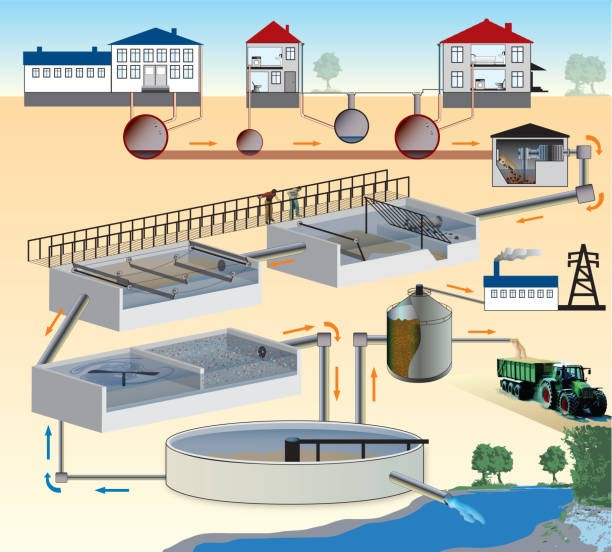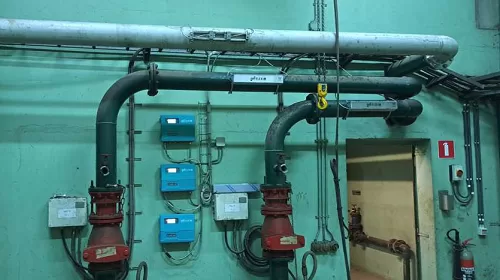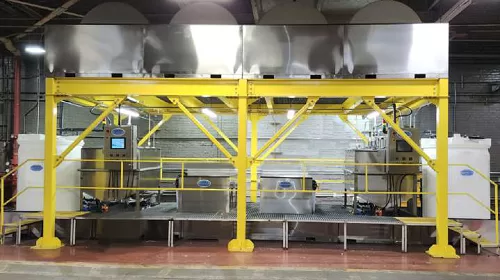Mohammed Abdul Rahman, CEO, Sahara Industry
India has become the most populous country in the world, surpassed China by 10 million people at the end of 2023. With healthy economic growth, it is expected to be the world’s third-largest economy by the end of the current decade. This rapid economic growth, however, comes with challenges, particularly in the realm of water resources.
As the population continues to grow, demand for water is escalating, placing immense pressure on existing water sources. Rapid urbanization, industrial expansion, and agriculture needs contribute to pressure on the declining water availability. Climate change events further worsens the situation, leading to unpredictable rainfall patterns, frequent flooding and water scarcity in various regions.
The challenges posed by water scarcity are multifaceted. Adequate and equitable distribution of water resources becomes crucial to ensure the well-being of both urban and rural populations as well as for industrial and agriculture production. Efficient water management practices, conservation efforts, and the development of sustainable technologies are imperative to address the growing demand.
Moreover, the depletion of groundwater levels and contamination of water sources add layers of complexity to the issue. It requires a comprehensive approach involving policy reforms, technological innovations, best practices and wide awareness to ensure the sustainable use of water resources. In the face of these challenges, India’s journey towards becoming a major global economy must include a concerted effort to manage its water resources effectively. Strategic planning, investments in water infrastructure, and judicial use are essential components of a sustainable approach to address the impending water crisis and secure a prosperous future for the nation.
Water Management: Institutional Practices
Institutional water management in India needs structured and organized efforts by various stakeholders, such as government bodies, regulatory agencies, and organizations, to oversee and regulate the utilization, distribution, and conservation of water resources. This involves the development and implementation of policies, regulations, and strategies to ensure sustainable and efficient water use.
With growing population and economic development, effective institutional water management is crucial for addressing challenges related to water scarcity, pollution, and equitable distribution. This includes defining policies, guidelines, and procedures to govern water-related activities in any institution.
Monitoring water quality is a critical aspect of water management, involving regular assessment and measurement of various parameters to ensure that water meets specified standards for human consumption, food preparation, and other intake. This may include testing for contaminants, pollutants, and overall water quality indicators.
Case Study
The institutional and corporate sectors have traditionally directed their resources primarily towards production and business expansion, often ignoring water-related concerns. However, this scenario is undergoing a transformation due to the escalating water crisis, leading to production delays and business losses. Institutional water management encompasses activities such as raw water procurement, effective treatment, and the management of water supply to meet specific quality and quantity requirements. Institutions responsible for efficient water management play a pivotal role in coordinating efforts among different stakeholders, including communities, industries, and service provider.
The Project
Client: Newtech Buildhome Private Limited
Project Brief: Le Meridien, the luxury hotel with 240+rooms and amenities in Hyderabad, Telangana has several facilities including 2 banquet halls, 5 dining halls, spacious rooftop swimming pool, gym, spa centre, and various modern amenities including large space for vehicles parking. The hotel, operating at nearly full capacity, has encountered challenges due to the water treatment plant not functioning at its designated level, hampering the services.
The Challenges:
Mineral scale deposits such as calcium carbonate and phosphate, calcium oxalate, barium and strontium sulphate, magnesium silicate and others and colloidal inorganic species such as silica present important challenges for process water applications. When silica is left uncontrolled it forms hard and tenacious deposits that are difficult and hazardous to remove. There was a disruption in the water treatment facilities installed by the hotel, attributed to the filter media not performing as expected.
The equipment set up at the project site was a sand filter with a size specification of 3672. The fundamental concept behind any sand filter involves the use of various sizes of pebbles and quartz to effectively filter water contaminants. In the initial layer, larger pebbles are arranged to enable unobstructed water flow. However, in the current sand filter, only pebbles of 10-20 mm size were present, leading to insufficient water passing through the filter.
The identified issues were as follows:
- The sand and pebbles within the sand filter vessel transformed into large rocks, rendering them impossible to remove from the vessel. Upon investigation, it was detected that only the suspended solids, which were halted by the media from the flowing water, are visible, while the remaining media has been crushed and transformed into rocks.
- The media of the sand filter solidified into a rock-like substance because the necessary backwashing of the sand filter was neglected. It continued to be utilized in filter mode for over a year without considering media maintenance and cleaning. With ongoing use, the rocks grew in size, leading to complete blockage, and even after this occurred, the sand filter continued to operate in bypass mode.
- The distribution system or strainer, through which the raw water is meant to pass, was entirely obstructed with suspended solids due to the continuous operation of the sand filter without backwashing.
- The problem gradually escalated, ultimately causing the filter to cease functioning entirely.
The Remedies:
Engineers from Sahara Industry examined the filtration plant and determined that the filter media had ceased functioning entirely. Addressing this issue required extraordinary solutions due to substantial complications. Attempts to extract the filter media from its designated location were unsuccessful, necessitating the cutting open of the vessel from outside. However, the water contamination had caused the media to become jammed and rigid. Even after cutting the vessel, the media could not be removed. To dismantle the giant rock formed inside the vessel, a high-capacity jackhammer machine was used, resulting in the complete destruction of the vessel.
To restore functionality to the water treatment plant, a new vessel and sand filter were installed. The re-establishment process involved various remedial and retrofitting measures:
- The existing sand filter was cut down, jackhammered, and removed from its space to accommodate the installation of the new one, restoring the water treatment system’s functionality.
- The lower and upper pipes and fittings of the multi-port valve were meticulously removed without disassembling the entire set, maintaining the integrity of the pipeline.
- A new FRP Vessel from Alfa Aerosol of the same size (3672) was installed with the same pipeline diameter.
- The sand filter vessel was filled with media comprising multiple-sized pebbles, quartz, and fine sand.
- A new distribution system was incorporated at the bottom of the vessel to facilitate unimpeded water flow.
- The filter underwent open backwashing before installation and was programmed to operate in filter mode after the completion of pipeline adjustments, ensuring functionality.
- The stretched ‘O’ Ring of the air release valve, caused by extraneous pressure, was repaired and reinstated to ensure proper functioning.
- The running pressure of the sand filter, assessed at 5-6 kg/cm2, revealed leaks from the pipeline system. Engineers determined that the multi-port valve and carbon filter were broken and needed replacement.
- All leaks and tears were sealed and repaired, ensuring the proper functioning of the sand filter without errors.
The success of effective institutional water management relies on collaboration, transparency, and adaptive governance to address the dynamic and complex nature of water challenges. By fostering sustainable practices and ensuring responsible water governance, institutions contribute to the long-term health of ecosystems, human well-being, and economic development.
Sahara Industry has successfully managed numerous critical water treatment projects, showcasing their expertise in addressing complex challenges within the field. The company’s portfolio reflects a commitment to delivering effective solutions, indicating a comprehensive understanding of various aspects of water treatment, from system evaluation to the implementation of advanced technologies. With a proven track record, Sahara Industry has emerged as a reliable partner in the realm of water treatment, has consistently delivered dependable and efficient solutions in its diverse portfolio of water treatment endeavors.
About the Author:
With marketing and finance background, the young entrepreneur has skillfully guided the company to become a prominent manufacturer and provider of advanced, high-quality water and wastewater treatment solutions in India. Through a combination of modern business strategies, technological innovation, and dynamic leadership, he has propelled his group companies to achieve remarkable growth, surpassing a turnover of INR 1200 million. His visionary approach and expertise have been instrumental in establishing the company as a leader in the industry, delivering efficient and effective solutions to meet the evolving needs of the market.





